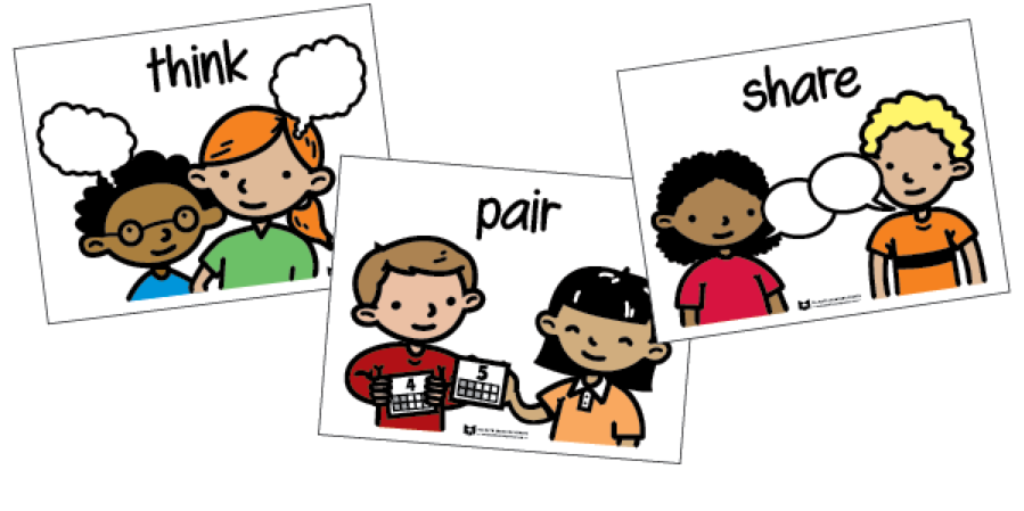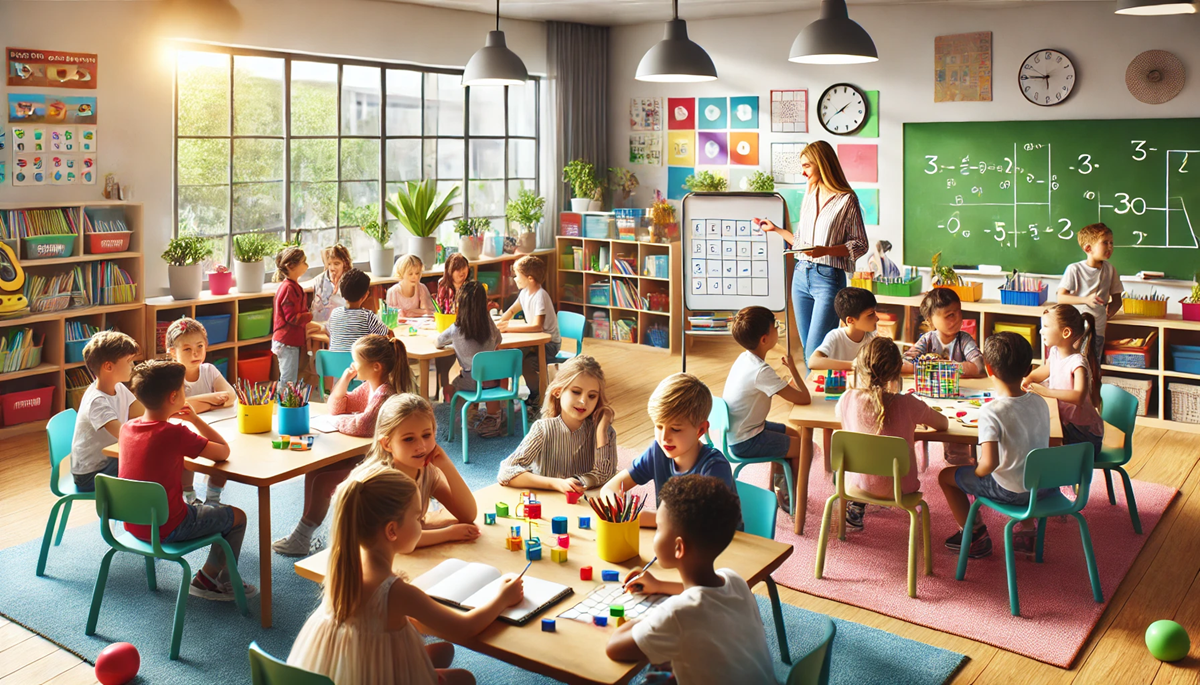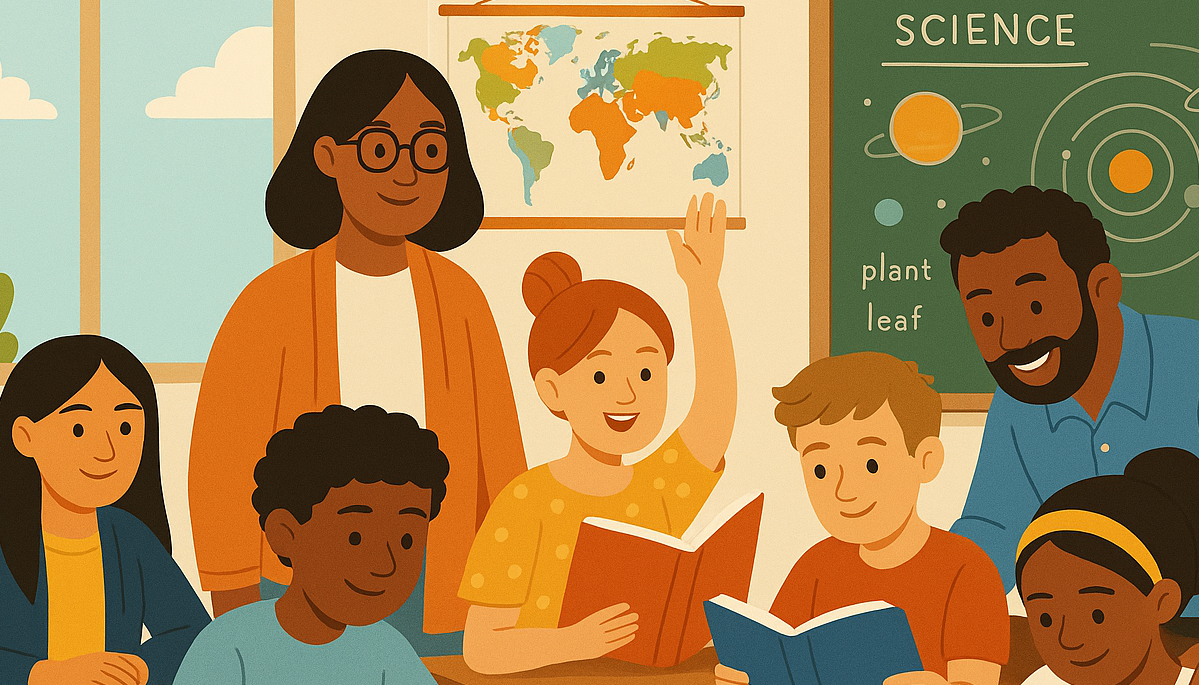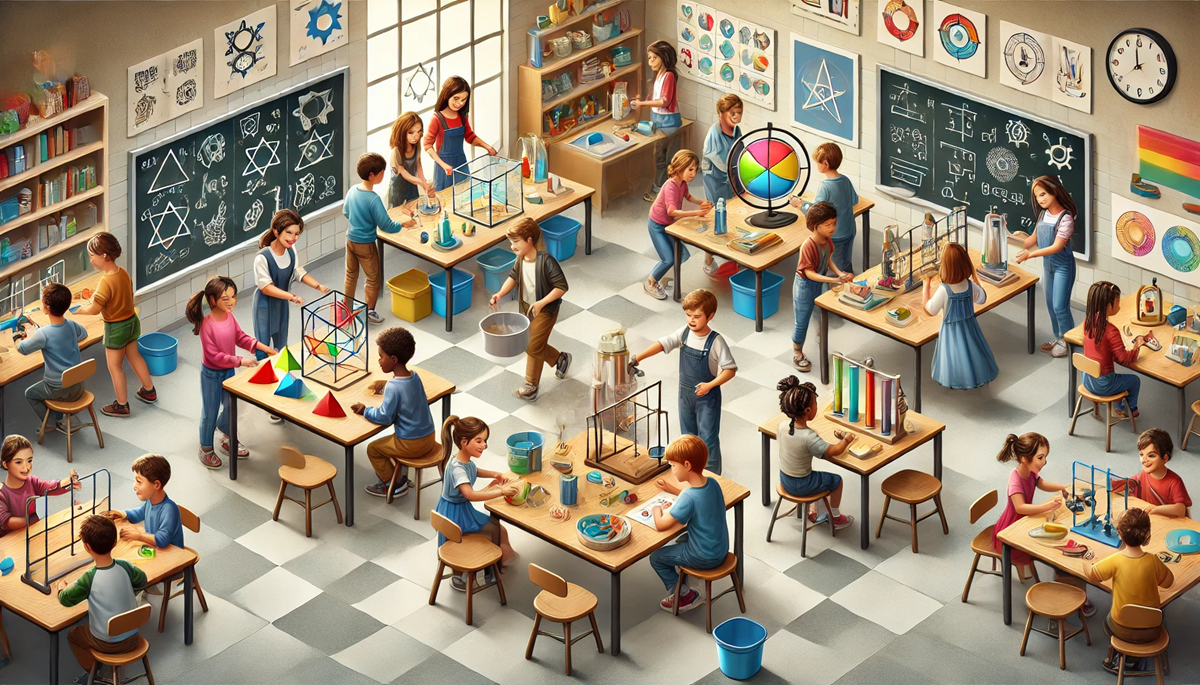In this post, we’ll talk about our core value of learning and think pair share strategies.
Ensemble Learning is still a relatively new organization, and we think it’s important to tell you what we’re all about. We are extremely mission-driven.
And we focus all our work around the goal of increasing equity for English learners. To organize our work around the mission, we have five core values that dictate how we work.
In this series, we review and explain each of these values.
See other blogs in the series here, here, and here.
We define learning as, “continuously exploring, reflecting, and improving.” What this means to us is we want to ensure we are life-long learners who reflect on our practice and facilitate opportunities for others to increase their knowledge about how to better serve English Learners.
We’ll share with you the importance of continually learning to improve our schools, and we’ll offer how Ensemble keeps learning at the core of our work.

Contents
Helping Schools and Leaders Put Learning at the Center
As a principal coach, my primary responsibility is to facilitate opportunities for principals to learn new skills and reflect on their leadership.
How often do you learn something new or reflect on what is working or not working? Coaching allows me to influence leadership practices beyond the knowledge gained during a professional development session. My effectiveness is heavily dependent upon my ability to build a trusting relationship with my coachee.
In the classroom, students perform better when they have a positive relationship with their teacher. Hence all of the research on the importance of teacher-student relationships.
It’s the same in my role. As I develop a stronger relationship, my principals are able to learn more and more.
As a principal, I believed credibility and care made the difference. I did not leverage relationships to coach teachers into using best practices. I facilitated professional development, but failed to implement the observation-feedback-and coaching loop presented in Chapter 2 of Leverage Leadership. As I accompany principals on classroom observations, I see the same thing.
Evidence of best practices in some classrooms but not others and a plethora of missed opportunities to increase student talk.
The relevance of think pair share strategies
I had a conversation with a few other colleagues, and we shared similar concerns.
I became a principal in 2006. Fourteen years later, why are we still trying to convince teachers to conduct Turn and Talks and Think Pair Shares? Why aren’t they using formative assessment strategies to determine guide their lessons and ensure students learn what they need?
English learners need to listen, speak, read, and write more. Are we doing our best to maximize the school day to ensure they listen and speak as much as possible?
And do we have a grasp on what they know and still need to learn?

How can more educators embrace the desire to continuously explore, reflect, and learn best practices? How many years (and tears) does it take to consistently implement practices that work?
All of these questions ultimately tie to learning and whether we value learning and progress in our schools.
We should teach differently than we were taught. We must leave round robin reading from textbooks and filling in blanks on endless worksheets in the past.
It’s 2020. Let’s make a shift to follow through with what we are learning at a level that makes a difference. Kids should not attend school day after day just to hear their teachers talk. In order to increase engagement, educators have to do better with exploring, learning, reflecting, and adopting best practices that increase student talk.
If you are responsible for monitoring instruction, and all you hear are teachers talking during classroom observations, imagine how students feel.
How can we accelerate implementation of practices that increase student engagement and increase our capacity to improve teaching and learning?
What Learning Means for Ensemble
At Ensemble, we embrace our core value of learning by putting into place a few specific practices that may be helpful as you work to shift your school or organization to embrace the core value of learning too:
- Every team member has three goals focusing on learning: a personal goal, a professional goal, and a risk-taking goal. This ensures that as we grow as individuals and professionals, we are consistently focusing on how to improve our practices.
- On a rotating basis, team members host a “brown bag” session that enables us to share our own interests and expertise. For example, our colleague, Dr. Leigh Mingle, is highly knowledgeable about data and research. Recently, we joined a video chat where she was able to teach all of us more about approaches to utilizing data to drive instructional improvement.
- We consistently ask for feedback from individuals who participate in our programs. We debrief each professional development session, walkthrough, and meeting to analyze that feedback, learn from the insights of our participants, and make adjustments for the future. This cycle of reflection ensures that learning stays at the forefront of our work.
If you’re thinking about how to improve teacher and student learning at your school or organization, consider these two articles by NWEA:
- Five Best Practices for Improving Teacher and Student Learning – Post One
- Five Best Practices for Improving Teacher and Student Learning – Post Two
Featured Image from: https://medium.com/@arye_10869/how-to-continue-learning-even-as-an-adult-febadb96e230



